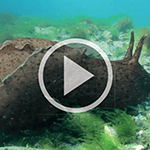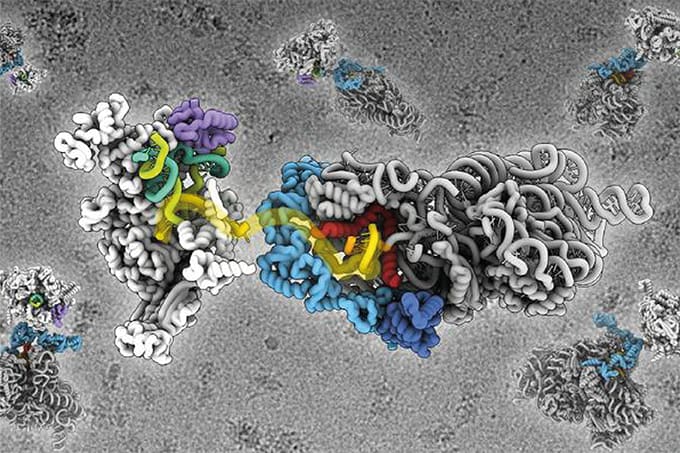
My home department is Chemistry, and most people recognize analytical chemistry as my specialty. At the University of Illinois, many professors work in multiple areas, and I take advantage of this. I currently have appointments in the area of Chemical Biology, the Departments of Molecular and Integrative Physiology and Bioengineering, and the Neuroscience Program. My group is also diverse in terms of students. I currently have fourteen PhD students; most are working for degrees in chemistry with an emphasis on analytical chemistry or chemical biology, three are working towards degrees in physiology, and another two in neuroscience. Two students are participants in the university’s MD/PhD program, earning their PhD while attending medical school. When it comes to our research focus, the group uses analytical chemistry to develop new technologies that we may then use to answer neuroscience-related questions.
So how did I end up in Illinois as an analytical chemi-neuro-physi-bio-engineer? I was born in New York, but grew up and spent most of my early life in Livermore, California, where both my parents were medical doctors. I went to school at the University of California, Davis, then to Arizona, where I learned a lot about optics and CCDs (charge-coupled devices), amongst other things, while working with Bonner Denton. My PhD was in analytical chemistry, but I wanted to broaden my horizons before starting a faculty position, and so it was off to Stanford for a three-year post-doc in both chemistry and neuroscience, with two Richards: Zare (chemistry) and Scheller (neuroscience). After Stanford, I moved to Illinois and I have been here since 1991; I started out as Assistant Professor, and have since risen through the ranks.
Where chemistry and biology collide
My group uses a range of approaches and is application oriented. We study the chemistry occurring in volume limited samples, such as small brain regions and even individual cells, with most of our efforts used to uncover novel neurochemical pathways, and mostly those related to cell-to-cell signaling. When it comes to studying the brain, we study neurotransmitters and neuropeptides. We also have three or four people working on quorum sensing in bacteria (cell-to-cell signaling). Essentially, my research is all about cells talking to each other and changing their physiological state based on this chemical communication. One common denominator is the type of biological problems we try to solve. The other is the types of approaches we develop and apply to these areas. In almost all cases, we use mass spectrometry (MS) and capillary scale separations to make our measurements. My research group has two parallel tracks: one is to develop new tools that make measurements that others have not been able to make, and the other group effort uses these tools to understand cell-to-cell communication within the brain, and how it controls behavior or changes during processes such as memory. Because cell-to-cell communication is a fundamental aspect of brain function that is well conserved across the animal kingdom, we use many different animal models. If we want to understand the most conserved neurochemical processes, we tend to look first at simple systems, so we work with a range of invertebrates – marine mollusks, corals, comb jellies, and arthropods – but we also work with a range of vertebrates. I do not know of many other groups that work with so many animal types. But working with a zoo allows us to zero in on fundamental aspects of neuronal communication and how they are organized into the networks that control behavior. It’s a lot of fun and it gives us the opportunity to contribute a surprising range of new information to different subfields – often on animal models where little has been published before.The Californian sea hare and the tortoise (or the Sweedler Group zoo)
While we use many animal models, there is one I would call ourselves experts on – the neurochemistry of Aplysia californica – a sea slug. For this and other models, we often collaborate with other research groups. The advantage of having many ongoing collaborations is that if we find an interesting molecule, we have colleagues who can perform genetic manipulation and do other testing for us to determine what it does. For example, if we find a specific peptide in the Aplysia feeding network, we can turn to a collaborator who specializes in electrophysiology. We have built relationships with researchers using other animals, such as including the commonly used rodent models. In most cases, we study how new transmitters and peptides are involved in or even control a range of behaviors and processes. As another example, we work on the suprachiasmatic nucleus, a small region of the mammalian brain that controls circadian rhythm. We and our collaborators have discovered a peptide that can advance the phase of the animal (for example, perhaps alleviate some aspects of jet lag). We are now studying the function of other peptides that appear to help couple the “master clock” in mammals to peripheral systems. From a more general point of view, neurons talk to each other by using a surprising range of neurotransmitters and peptide modulators. New advances in mass spectrometry – and other techniques – have allowed our group to discover literally more than a thousand peptides used in a range of animal models. Rather than taking credit for such work, let’s give much of the credit to the developers of the instruments that make these discovery efforts possible; scientists have uncovered many neuropeptides because of advances in mass spectrometry-based tools. As far as an illustration of the advances in measurement technology, consider the Nobel Prize winning research of Roger Guillemin and the characterization of thyrotropin releasing factor; in his award acceptance speech, he talked about using five million sheep brains to isolate enough material to identify one small peptide. And now – less than 50 years later – we and other groups can characterize many peptides from a single cell! Why this amazing decrease in sample size? Remarkable increases in instrument sensitivity and information content, which has changed everything...The importance of being earnest with all samples
Besides creating better measurements, we also work with other researchers’ samples to identify the peptides that are present in a particular brain region. And, as an analytical chemist, I want to give these collaborators the right answer to their questions. MS will provide me with a peptide sequence that I can verify against the genome. However, in a few cases, our MS approaches have not provided the full answer. For example, in one of our model systems, a neuropeptide requires a single amino acid in its sequence be switched from the L to D form to become biologically active. Note that this is a zero-Dalton mass change that can easily be overlooked. If we don’t discover that there is a D-amino acid in the peptide, anyone using our work will end up synthesizing the wrong inactive form of the peptide. To prevent this, we’re developing a scheme that allows us to look for this unusual modification, and are also trying to understand how it happens biologically, using several different model systems across different phyla. We hope to learn how prevalent this modification is and the enzymes that control it. We also spend a fair amount of time learning to collect and handle our samples, both those collected locally and those from the remote corners of the globe. While the fields of microscopy rely on detailed protocols created over decades to preserve the spatial integrity of the sample using a range of chemical fixation approaches, with mass spectrometry and especially mass spectrometry imaging, we don’t want enzymes to degrade our peptides. At the same time we want to avoid chemical fixation, which turns the brain into a piece of plastic. We’ve needed to learn a number of tricks, like how to perfuse the brain with ice-cold saline to cool it before dissection, which minimizes degradation. Now, we can remove individual live cells that we can culture if we need to; we can isolate them and immediately characterize their metabolites and peptides, or we can preserve them for off-line characterization at a later time using a combination of chemical and heat stabilization. We have the expertise within the group to collect selected individual cells from a surprising range of animal models. Our sample handling expertise has become enabling for a number of projects.The state of the (analytical) art
Major innovations that change our understanding of neuroscience are rare but do occur. While microscopy, for example, has been around for a long time, over the past two decades, we have seen the creation of stimulated emission depletion microscopy breaking the diffraction limit, and clever informatics and statistical approaches that break other rules! These new tools allowed us to learn about the fine (and dynamic) structure of the brain. But for me, it is mass spectrometry that holds my interest as it can tell us what is in the cells down to the molecular level. Between sampling handling, separations and mass spectrometry, our ability to collect samples and chemically characterize them has become unprecedented. Through President Obama’s BRAIN initiative, advances in a range of techniques will allow us to take something as complex as the brain and characterize it at a previously impossible level. Bringing this back to my group’s efforts, we are adapting our single cell measurement approaches to characterize specific cells as well as much larger cellular populations using a range of mass spectrometry approaches. I would say one of my goals – one that really excites me and gets me up in the morning – is trying to understand fundamental questions such as “what is memory?” and how those fundamentals relate to healthy brain function. But, of course, understanding how neurons control behavior is important for many diseases – and I receive grant funding to understand those processes in relationship to disease progression and drug addiction. I believe we are in a very exciting decade, not because of what we’re doing in the Sweedler Group but because of the enormous growth in our ability to develop and fully understand new technologies – and our ability to apply them to understanding the brain with unprecedented detail across time, space, and chemistry. I truly believe that questions like Aristotle’s “what is thought?” are now on the verge of being answered. And I hope that my research group will have a role to play in these discoveries.Taming a many-headed monster
Aside from my research interests, life has become more complex over the last years. I have been the Editor-in-Chief of Analytical Chemistry for almost five years, a job that is challenging, rewarding, and lots of fun. However, there can be too much of a good thing! Recently, I also became responsible for the American Chemical Society’s Journal of Proteome Research (JPR) as interim editor for several months. It was fun (at times!), but in reality, working with two journals has been more work than I wanted, and I was more than happy to recently hand over the reins of JPR to new Editor-in-Chief John Yates III. I’ve been working with John for a number of years, and am looking forward to seeing where he takes the JPR. Without any bias, I consider Analytical Chemistry to be the best journal in its field. It has a long history and has had some very influential publications, and continues to represent the best of the fields of measurement science. I certainly enjoy keeping the journal at the forefront. Its mission is to represent all the subfields within analytical chemistry, whether they are “hot” and trending today, in a decade or never. We strive to publish the best measurement science research – electrochemistry, MS, nanotechnology, environmental, biological, and so on. It’s fun and rewarding to keep the many-headed monster that is Analytical Chemistry moving forward. Fifty years ago, the journal used to have a single editor, but as the journal has grown, the need for associate editors became apparent. Now, the number of submissions is in the many thousands per year, and it would clearly be impossible for a single editor to manage and read them all. My role is gatekeeper; I decide whether a manuscript fits into the various subfields and then assign each manuscript to one of our seventeen associate editors (and a few hundred to me to act as the associate editor). This process keeps me up to date on the field. Five years ago – when I started – I devoted a large effort to increase our global representation. Now, I believe we are well represented from a global point of view. If you look at Europe, North America and Asia, each area makes up about 30 percent of the submissions. We still need to improve on South America and Africa because we don’t get enough submissions from those continents. But the global nature of publishing in Analytical Chemistry has been fun to observe – and influence.The semantics of analytical science
Let me end with some thoughts on the future of the field of analytical chemistry. While in the past, most measurement scientists were in chemistry departments, some were in physics and biology departments. Today, we have universities creating bioengineering departments where a fraction of the research would have been considered analytical chemistry even a decade ago. Our campus (and we are not alone) has hired many bioengineers that are, in effect, analytical chemists – they attend SCiX and Pittcon, and they publish in Analytical Chemistry – but they refer to themselves as engineers, not chemists. I am not sure where this trend is heading and how prevalent it is in other countries. But, because of the growth of measurement science in medical schools, engineering, physics, and other non-chemistry departments, analytical science is a field that is highly vibrant – and growing. Some of my colleagues may disagree, but if you forget about the issues of department affiliations, significant growth can be seen. But such evolution creates tensions and it is hard to say what our field will be called in 10 years; nevertheless, it’s certainly an acknowledgment of the importance of analytical science. So, how does that fit with a journal called Analytical Chemistry? Maybe we’ll need to change its name to be more inclusive! Though that likely will not happen, we do need to remain flexible and inclusive to ensure continued growth in our field.Watch Sweedler in a Science Nation video “Sluggish Thoughts”





